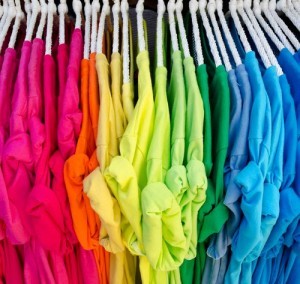
Dyeing in textiles goes back to times immemorial. From coloring textiles with vegetables dyes to the modern day technology of the present era, we have come a long way in textile dyeing. As against the ancient times where dyes were made using natural resources, today most of the dyes are manufactured from petroleum based intermediates and coal tars.
Dyes made from these substances are primarily made and sold in the form of granules, powders, liquid pigment dispersions and pastes. Depending on the end usage and consistency demanded by the textile companies, the proportion of the active ingredients could vary from 20% to 80%. Best thing is, these dyes are created keeping in view the environment concerns. Most of these dyes do not pose threat to the environment.
These new age dyes, as we call them are created with modern technology and are tried, tested and tweaked to meet the demands of different types of fabrics. Since the textile industry itself is in the process of evolution and new varieties of fabrics get developed, dyes for textiles also undergo changes to meet the ever changing demands of the fashion industry. Also, unlike other markets, the demand for textile dyes varies according to season. That’s why the dye manufacturers are on their toes always creating variations in their dyes to meet the consumption needs of the textile industry. For example, the polyesters are a major consumer of disperse dyes, while the high cost cotton fabrics are more in demand during the summers and therefore there is increase in demand for vat, reactive and direct dyes before the onset of summer.
With that said, let us get an insight into the types of textile dyes that are in use today. This is in accordance with the Color Index journal, which is jointly published by the American Association of Textile Chemists and Colorists and the Society of Dyers and Colorists UK:
The textile dyes are broadly classified as under:
Acid Dyes: Acid dyes are anionic dyes and are best suited for silk, wool, polyamide and modified acrylics. Depending on the structure of the dyes, it can be classified as weak, strong or neutral acids.
Azoic Dyes: Suitable for dyeing cotton fabrics, azoic dyes are best used to give deep, bright shades to the fabric. Azoic dyes are typically used to generate red, orange, navy blue, scarlet and black color.
Basic Dyes: If you want to add brilliant, intense colors to your wools, silk or acrylics, basic dye is the answer. If you want to use it for cottons, you will need to use direct dyes as mordant.
Direct Dyes: This versatile dye can be used to color paper, wool, cotton, nylon, viscose, jute, linen and more.
Reactive Dyes: If you want to have excellent brightness as well as color fastness for your cottons, wool, rayon, flax, silk, acetate fibers or polyamide, reactive dye is your best bet. The dyes are available in powder, liquid and paste form.
Some of the other dyes include solvent dyes, vat dyes and more.